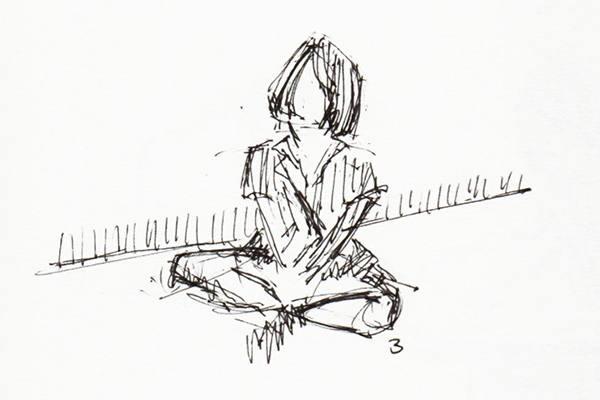“Show me your good sitting children” was a phrase I overheard recently in a Greater London primary school. One hundred and twenty pupils, assembled in the school hall, assumed a “good sitting” position in rows on the floor - legs crossed, hands in their laps - and looked up, towards the teacher. This phrase caught my attention, as did the children’s response.
I was a regular visitor to the school over a three-year period as a researcher. I also am a furniture designer, and yoga teacher, and my research project was investigating the ways in which primary school furniture design, and the social and cultural attitudes surrounding education, can affect young children’s natural good posture.
The phrase “Show me your good sitting” asks the immediate question; what exactly is “good sitting” in the context of a primary school? What I saw in the assembly hall was not “good sitting” from a biomechanical perspective, it was quite the opposite. Sitting cross-legged on the floor is physically demanding. Moving from a standing to sitting position causes a complex mechanical reaction between the thighs, hips and lumbar spine. With inadequate support this can cause discomfort in the lower back. In addition children, particularly those nearer the front, had to crane their necks to look at the teacher who was standing to address them. The pupils all knew what was expected of them when they heard the phrase, and it was certainly an effective way of getting their attention and controlling them. However in this instance “good sitting” was more about the children’s behaviour and less about their physical comfort. I believe both factors should be given equal weight.
With regard to the classroom furniture it has been known for some time that using badly fitting chairs and tables can cause back pain in pupils. Apart from being uncomfortable, this has potential consequences for their long-term wellbeing. A typical classroom chair in use today is based on a 1960s design by Robin Day. The original product was not designed specifically for classroom use; the aim was rather to develop a chair that could be manufactured out of a tough yet inexpensive material, polypropylene. My research shows that this type of chair design does not provide appropriate biomechanical support for the primary school pupils who have to use it daily. Biomechanical “good sitting” is hard to achieve without tipping the seat or perching on the seat front, and both of these solutions can cause problems for class teachers.

Pupil sitting on the floor: pen on paper, by the author, 2013
My mission is for the design of school furniture to be brought into the 21st century. For children’s short-term comfort and long-term wellbeing “good sitting” in school, with or without furniture, ought to be grounded in good biomechanics. In continuing my research I aim to develop school furniture products in collaboration with those who know most about it - pupils and teachers.
There are three projects that I am actively seeking support with. First, I am looking to research and develop a new furniture product for primary schools that will provide currently missing and vital ergonomic support for primary school Key Stage 1 pupils. Second, I would like to pilot a project, in collaboration with a primary school, to investigate the impact on learning of using different types of furniture. Third, I would also like to run a pilot project with secondary school design technology pupils designing a school chair from a pupils’ perspective. If your school is interested, or if you would like to know more about my research please get in touch.
In future Classroom Movement postings I will update you on progress and share more details of my research. In the meantime, as part of my continued research, please share any stories about how the design of furniture affected your classroom experience - whether as a teacher or a pupil - in the comments section below or email jackie@lightfoot-uk.com.

Join the discussion
Comments
Please login to post a comment or reply
Don't have an account? Click here to register.
Jackie, this is such an important issue. I am an Alexander Technique practitioner and am about to launch a product to help prevent young children from slouching in their buggies, so your area of interest in the impact of posture on health and learning is similar to mine. I also know a primary school who may be interested in helping you with your on site research. Hope you will get in touch with me. Best wishes